Digital Fortress Read online
Page 2
"How about you?" Becker asked. "Play any sports?"
"I'm a black belt in Stairmaster."
Becker cringed. "I prefer sports you can win."
Susan smiled. "Overachiever, are we?"
Georgetown's star defenseman blocked a pass, and there was a communal cheer in the stands. Susan leaned over and whispered in David's ear. "Doctor."
He turned and eyed her, lost.
"Doctor," she repeated. "Say the first thing that comes to mind."
Becker looked doubtful. "Word associations?"
"Standard NSA procedure. I need to know who I'm with." She eyed him sternly. "Doctor."
Becker shrugged. "Seuss."
Susan gave him a frown. "Okay, try this one… 'kitchen.' "
He didn't hesitate. "Bedroom."
Susan arched her eyebrows coyly. "Okay, how about this… 'cat.' "
"Gut," Becker fired back.
"Gut?"
"Yeah. Catgut. Squash racquet string of champions."
"That's pleasant." She groaned.
"Your diagnosis?" Becker inquired.
Susan thought a minute. "You're a childish, sexually frustrated squash fiend."
Becker shrugged. "Sounds about right."
* * *
It went on like that for weeks. Over dessert at all-night diners Becker would ask endless questions.
Where had she learned mathematics?
How did she end up at the NSA?
How did she get so captivating?
Susan blushed and admitted she'd been a late bloomer. Lanky and awkward with braces through her late teens, Susan said her Aunt Clara had once told her God's apology for Susan's plainness was to give her brains. A premature apology, Becker thought.
Susan explained that her interest in cryptography had started in junior high school. The president of the computer club, a towering eighth grader named Frank Gutmann, typed her a love poem and encrypted it with a number-substitution scheme. Susan begged to know what it said. Frank flirtatiously refused. Susan took the code home and stayed up all night with a flashlight under her covers until she figured out the secret-every number represented a letter. She carefully deciphered the code and watched in wonder as the seemingly random digits turned magically into beautiful poetry. In that instant, she knew she'd fallen in love-codes and cryptography would become her life.
Almost twenty years later, after getting her master's in mathematics from Johns Hopkins and studying number theory on a full scholarship from MIT, she submitted her doctoral thesis, Cryptographic Methods, Protocols, and Algorithms for Manual Applications. Apparently her professor was not the only one who read it; shortly afterward, Susan received a phone call and a plane ticket from the NSA.
Everyone in cryptography knew about the NSA; it was home to the best cryptographic minds on the planet. Each spring, as the private-sector firms descended on the brightest new minds in the workforce and offered obscene salaries and stock options, the NSA watched carefully, selected their targets, and then simply stepped in and doubled the best standing offer. What the NSA wanted, the NSA bought. Trembling with anticipation, Susan flew to Washington's Dulles International Airport where she was met by an NSA driver, who whisked her off to Fort Meade.
There were forty-one others who had received the same phone call that year. At twenty-eight, Susan was the youngest. She was also the only female. The visit turned out to be more of a public relations bonanza and a barrage of intelligence testing than an informational session. In the week that followed, Susan and six others where invited back. Although hesitant, Susan returned. The group was immediately separated. They underwent individual polygraph tests, background searches, handwriting analyses, and endless hours of interviews, including taped inquiries into their sexual orientations and practices. When the interviewer asked Susan if she'd ever engaged in sex with animals, she almost walked out, but somehow the mystery carried her through-the prospect of working on the cutting edge of code theory, entering "The Puzzle Palace," and becoming a member of the most secretive club in the world-the National Security Agency.
Becker sat riveted by her stories. "They actually asked you if you'd had sex with animals?"
Susan shrugged. "Part of the routine background check."
"Well…" Becker fought off a grin. "What did you say?"
She kicked him under the table. "I told them no!" Then she added, "And until last night, it was true."
* * *
In Susan's eyes, David was as close to perfect as she could imagine. He only had one unfortunate quality; every time they went out, he insisted on picking up the check. Susan hated seeing him lay down a full day's salary on dinner for two, but Becker was immovable. Susan learned not to protest, but it still bothered her. I make more money than I know what to do with, she thought. I should be paying.
Nonetheless, Susan decided that aside from David's outdated sense of chivalry, he was ideal. He was compassionate, smart, funny, and best of all, he had a sincere interest in her work. Whether it was during trips to the Smithsonian, bike rides, or burning spaghetti in Susan's kitchen, David was perpetually curious. Susan answered what questions she could and gave David the general, unclassified overview of the National Security Agency. What David heard enthralled him.
Founded by President Truman at 12:01 a.m. on November 4, 1952, the NSA had been the most clandestine intelligence agency in the world for almost fifty years. The NSA's seven-page inception doctrine laid out a very concise agenda: to protect U.S. government communications and to intercept the communications of foreign powers.
The roof of the NSA's main operations building was littered with over five hundred antennas, including two large radomes that looked like enormous golf balls. The building itself was mammoth-over two million square feet, twice the size of CIA headquarters. Inside were eight million feet of telephone wire and eighty thousand square feet of permanently sealed windows.
Susan told David about COMINT, the agency's global reconnaissance division-a mind-boggling collection of listening posts, satellites, spies, and wiretaps around the globe. Thousands of communiques and conversations were intercepted every day, and they were all sent to the NSA's analysts for decryption. The FBI, CIA, and U.S. foreign policy advisors all depended on the NSA's intelligence to make their decisions.
Becker was mesmerized. "And code-breaking? Where do you fit in?"
Susan explained how the intercepted transmissions often originated from dangerous governments, hostile factions, and terrorist groups, many of whom were inside U.S. borders. Their communications were usually encoded for secrecy in case they ended up in the wrong hands-which, thanks to COMINT, they usually did. Susan told David her job was to study the codes, break them by hand, and furnish the NSA with the deciphered messages. This was not entirely true.
Susan felt a pang of guilt over lying to her new love, but she had no choice. A few years ago it would have been accurate, but things had changed at the NSA. The whole world of cryptography had changed. Susan's new duties were classified, even to many in the highest echelons of power.
"Codes," Becker said, fascinated. "How do you know where to start? I mean… how do you break them?"
Susan smiled. "You of all people should know. It's like studying a foreign language. At first the text looks like gibberish, but as you learn the rules defining its structure, you can start to extract meaning."
Becker nodded, impressed. He wanted to know more.
With Merlutti's napkins and concert programs as her chalkboard, Susan set out to give her charming new pedagogue a mini course in cryptography. She began with Julius Caesar's "perfect square" cipher box.
Caesar, she explained, was the first code-writer in history. When his foot-messengers started getting ambushed and his secret communiques stolen, he devised a rudimentary way to encrypt this directives. He rearranged the text of his messages such that the correspondence looked senseless. Of course, it was not. Each message always had a letter-count that was a perfect square-sixteen, twenty-fi
ve, one hundred-depending on how much Caesar needed to say. He secretly informed his officers that when a random message arrived, they should transcribe the text into a square grid. If they did, and read top-to-bottom, a secret message would magically appear.
Over time Caesar's concept of rearranging text was adopted by others and modified to become more difficult to break. The pinnacle of non computer-based encryption came during World War II. The Nazis built a baffling encryption machine named Enigma. The device resembled an old-fashioned typewriter with brass interlocking rotors that revolved in intricate ways and shuffled cleartext into confounding arrays of seemingly senseless character groupings. Only by having another Enigma machine, calibrated the exact same way, could the recipient break the code.
Becker listened, spellbound. The teacher had become the student.
One night, at a university performance of The Nutcracker, Susan gave David his first basic code to break. He sat through the entire intermission, pen in hand, puzzling over the eleven-letter message:
HL FKZC VD LDS
Finally, just as the lights dimmed for the second half, he got it. To encode, Susan had simply replaced each letter of her message with the letter preceding it in the alphabet. To decrypt the code, all Becker had to do was shift each letter one space forward in the alphabet-"A" became "B," "B" became "C," and so on. He quickly shifted the remaining letters. He never imagined four little syllables could make him so happy:
IM GLAD WE MET
He quickly scrawled his response and handed it to her:
LD SNN
Susan read it and beamed.
Becker had to laugh; he was thirty-five years-old, and his heart was doing back flips. He'd never been so attracted to a woman in his life. Her delicate European features and soft brown eyes reminded him of an ad for Estee Lauder. If Susan's body had been lanky and awkward as a teenager, it sure wasn't now. Somewhere along the way, she had developed a willowy grace-slender and tall with full, firm breasts and a perfectly flat abdomen. David often joked that she was the first swimsuit model he'd ever met with a doctorate in applied mathematics and number theory. As the months passed, they both started to suspect they'd found something that could last a lifetime.
They'd been together almost two years when, out of the blue, David proposed to her. It was on a weekend trip to the Smoky Mountains. They were lying on a big canopy bed at Stone Manor. He had no ring-he just blurted it out. That's what she loved about him-he was so spontaneous. She kissed him long and hard. He took her in his arms and slipped off her nightgown.
"I'll take that as a yes," he said, and they made love all night by the warmth of the fire.
That magical evening had been six months ago-before David's unexpected promotion to chairman of the Modern Language Department. Their relationship had been in a downhill slide ever since.
Chapter 4
The crypto door beeped once, waking Susan from her depressing reverie. The door had rotated past its fully open position and would be closed again in five seconds, having made a complete 360-degree rotation. Susan gathered her thoughts and stepped through the opening. A computer made note of her entry.
Although she had practically lived in Crypto since its completion three years ago, the sight of it still amazed her. The main room was an enormous circular chamber that rose five stories. Its transparent, domed ceiling towered 120 feet at its central peak. The Plexiglas cupola was embedded with a polycarbonate mesh-a protective web capable of withstanding a two-megaton blast. The screen filtered the sunlight into delicate lacework across the walls. Tiny particles of dust drifted upward in wide unsuspecting spirals-captives of the dome's powerful deionizing system.
The room's sloping sides arched broadly at the top and then became almost vertical as they approached eye level. Then they became subtly translucent and graduated to an opaque black as they reached the floor-a shimmering expanse of polished black tile that shone with an eerie luster, giving one the unsettling sensation that the floor was transparent. Black ice.
Pushing through the center of the floor like the tip of a colossal torpedo was the machine for which the dome had been built. Its sleek black contour arched twenty-three feet in the air before plunging back into the floor below. Curved and smooth, it was as if an enormous killer whale had been frozen mid breach in a frigid sea.
This was TRANSLTR, the single most expensive piece of computing equipment in the world-a machine the NSA swore did not exist.
Like an iceberg, the machine hid 90 percent of its mass and power deep beneath the surface. Its secret was locked in a ceramic silo that went six stories straight down-a rocketlike hull surrounded by a winding maze of catwalks, cables, and hissing exhaust from the freon cooling system. The power generators at the bottom droned in a perpetual low-frequency hum that gave the acoustics in Crypto a dead, ghostlike quality.
* * *
TRANSLTR, like all great technological advancements, had been a child of necessity. During the 1980s, the NSA witnessed a revolution in telecommunications that would change the world of intelligence reconnaissance forever-public access to the Internet. More specifically, the arrival of E-mail.
Criminals, terrorists, and spies had grown tired of having their phones tapped and immediately embraced this new means of global communication. E-mail had the security of conventional mail and the speed of the telephone. Since the transfers traveled through underground fiber-optic lines and were never transmitted into the airwaves, they were entirely intercept-proof-at least that was the perception.
In reality, intercepting E-mail as it zipped across the Internet was child's play for the NSA's techno-gurus. The Internet was not the new home computer revelation that most believed. It had been created by the Department of Defense three decades earlier-an enormous network of computers designed to provide secure government communication in the event of nuclear war. The eyes and ears of the NSA were old Internet pros. People conducting illegal business via E-mail quickly learned their secrets were not as private as they'd thought. The FBI, DEA, IRS, and other U.S. law enforcement agencies-aided by the NSA's staff of wily hackers-enjoyed a tidal wave of arrests and convictions.
Of course, when the computer users of the world found out the U.S. government had open access to their E-mail communications, a cry of outrage went up. Even pen pals, using E-mail for nothing more than recreational correspondence, found the lack of privacy unsettling. Across the globe, entrepreneurial programmers began working on a way to keep E-mail more secure. They quickly found one and public-key encryption was born.
Public-key encryption was a concept as simple as it was brilliant. It consisted of easy-to-use, home-computer software that scrambled personal E-mail messages in such a way that they were totally unreadable. A user could write a letter and run it through the encryption software, and the text would come out the other side looking like random nonsense-totally illegible-a code. Anyone intercepting the transmission found only an unreadable garble on the screen.
The only way to unscramble the message was to enter the sender's "pass-key"-a secret series of characters that functioned much like a PIN number at an automatic teller. The pass-keys were generally quite long and complex; they carried all the information necessary to instruct the encryption algorithm exactly what mathematical operations to follow tore-create the original message.
A user could now send E-mail in confidence. Even if the transmission was intercepted, only those who were given the key could ever decipher it.
The NSA felt the crunch immediately. The codes they were facing were no longer simple substitution ciphers crackable with pencil and graph paper-they were computer-generated hash functions that employed chaos theory and multiple symbolic alphabets to scramble messages into seemingly hopeless randomness.
At first, the pass-keys being used were short enough for the NSA's computers to "guess." If a desired pass-key had ten digits, a computer was programmed to try every possibility between 0000000000 and 9999999999. Sooner or later the computer hit the cor
rect sequence. This method of trial-and-error guessing was known as "brute force attack." It was time-consuming but mathematically guaranteed to work.
As the world got wise to the power of brute-force code-breaking, the pass-keys started getting longer and longer. The computer time needed to "guess" the correct key grew from weeks to months and finally to years.
By the 1990s, pass-keys were over fifty characters long and employed the full 256-character ASCII alphabet of letters, numbers, and symbols. The number of different possibilities was in the neighborhood of 10120-ten with 120 zeros after it. Correctly guessing a pass-key was as mathematically unlikely as choosing the correct grain of sand from a three-mile beach. It was estimated that a successful brute-force attack on a standard sixty-four-bit key would take the NSA's fastest computer-the top-secret Cray/Josephson II-over nineteen years to break. By the time the computer guessed the key and broke the code, the contents of the message would be irrelevant.
Caught in a virtual intelligence blackout, the NSA passed a top-secret directive that was endorsed by the President of the United States. Buoyed by federal funds and a carte blanche to do whatever was necessary to solve the problem, the NSA set out to build the impossible: the world's first universal code-breaking machine.
Despite the opinion of many engineers that the newly proposed code-breaking computer was impossible to build, the NSA lived by its motto: Everything is possible. The impossible just takes longer.
Five years, half a million man-hours, and $1.9 billion later, the NSA proved it once again. The last of the three million, stamp-size processors was hand-soldered in place, the final internal programming was finished, and the ceramic shell was welded shut. TRANSLTR had been born.
Although the secret internal workings of TRANSLTR were the product of many minds and were not fully understood by any one individual, its basic principle was simple: Many hands make light work.
Its three million processors would all work in parallel-counting upward at blinding speed, trying every new permutation as they went. The hope was that even codes with unthinkably colossal pass-keys would not be safe from TRANSLTR's tenacity. This multibillion-dollar masterpiece would use the power of parallel processing as well as some highly classified advances in clear text assessment to guess pass-keys and break codes. It would derive its power not only from its staggering number of processors but also from new advances in quantum computing-an emerging technology that allowed information to be stored as quantum-mechanical states rather than solely as binary data.
The moment of truth came on a blustery Thursday morning in October. The first live test. Despite uncertainty about how fast the machine would be, there was one thing on which the engineers agreed-if the processors all functioned in parallel, TRANSLTR would be powerful. The question was how powerful.
The answer came twelve minutes later. There was a stunned silence from the handful in attendance when the printout sprang to life and delivered the cleartext-the broken code. TRANSLTR had just located a sixty-four-character key in a little over ten minutes, almost a million times faster than the two decades it would have taken the NSA's second-fastest computer.
Led by the deputy director of operations, Commander Trevor J. Strathmore, the NSA's Office of Production had triumphed. TRANSLTR was a success. In the interest of keeping their success a secret, Commander Strathmore immediately leaked information that the project had been a complete failure. All the activity in the Crypto wing was supposedly an attempt to salvage their $2 billion fiasco. Only the NSA elite knew the truth-TRANSLTR was cracking hundreds of codes every day.
With word on the street that computer-encrypted codes were entirely unbreakable-even by the all-powerful NSA-the secrets poured in. Drug lords, terrorists, and embezzlers alike-weary of having their cellular phone transmissions intercepted-were turning to the exciting new medium of encrypted E-mail for instantaneous global communications. Never again would they have to face a grand jury and hear their own voice rolling off tape, proof of some long-forgotten cellular phone conversation plucked from the air by an NSA satellite.
Intelligence gathering had never been easier. Codes intercepted by the NSA entered TRANSLTR as totally illegible ciphers and were spit out minutes later as perfectly readable cleartext. No more secrets.
To make their charade of incompetence complete, the NSA lobbied fiercely against all new computer encryption software, insisting it crippled them and made it impossible for lawmakers to catch and prosecute the criminals. Civil rights groups rejoiced, insisting the NSA shouldn't be reading their mail anyway. Encryption software kept rolling off the presses. The NSA had lost the battle-exactly as it had planned. The entire electronic global community had been fooled… or so it seemed.
Chapter 5
"Where is everyone?" Susan wondered as she crossed the deserted Crypto floor. Some emergency.
Although most NSA departments were fully staffed seven days a week, Crypto was generally quiet on Saturdays. Cryptographic mathematicians were by nature high-strung workaholics, and there existed an unwritten rule that they take Saturdays off except in emergencies. Code-breakers were too valuable a commodity at the NSA to risk losing them to burnout.
As Susan traversed the floor, TRANSLTR loomed to her right. The sound of the generators eight stories below sounded oddly ominous today. Susan never liked being in Crypto during off hours. It was like being trapped alone in a cage with some grand, futuristic beast. She quickly made her way toward the commander's office.

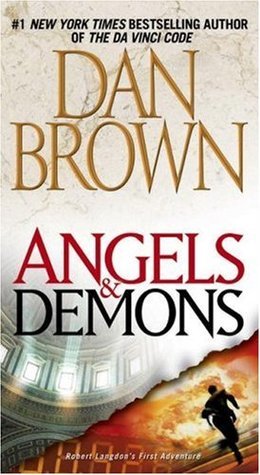 Angels & Demons
Angels & Demons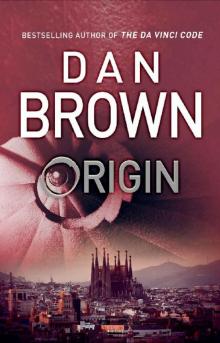 Origin
Origin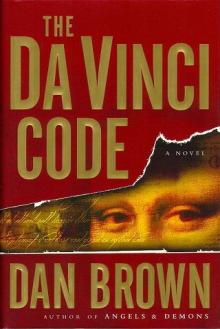 The Da Vinci Code
The Da Vinci Code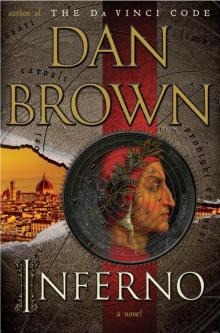 Inferno
Inferno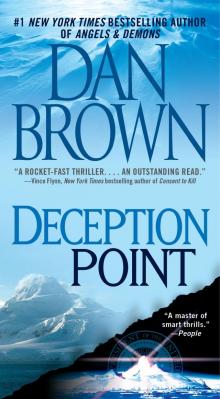 Deception Point
Deception Point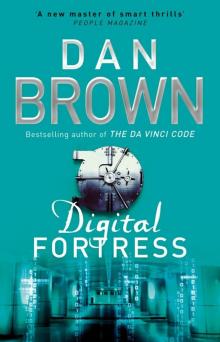 Digital Fortress
Digital Fortress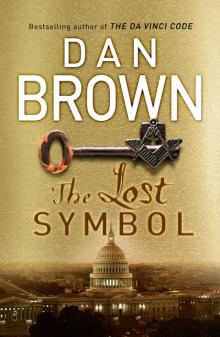 The Lost Symbol
The Lost Symbol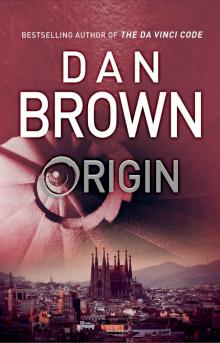 Origin: (Robert Langdon Book 5)
Origin: (Robert Langdon Book 5)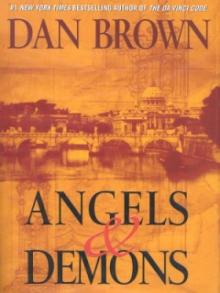 Angles & Demons
Angles & Demons Inferno: A Novel
Inferno: A Novel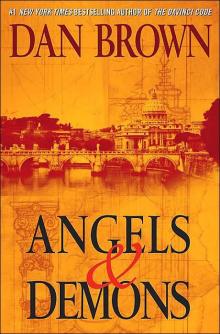 Angels & Demons rl-1
Angels & Demons rl-1 The Great Expectations School
The Great Expectations School The Lost Symbol rl-3
The Lost Symbol rl-3 Angels and Demons
Angels and Demons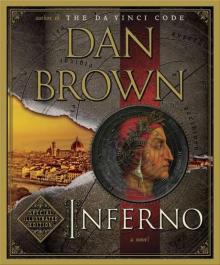 Inferno: Special Illustrated Edition: Featuring Robert Langdon
Inferno: Special Illustrated Edition: Featuring Robert Langdon